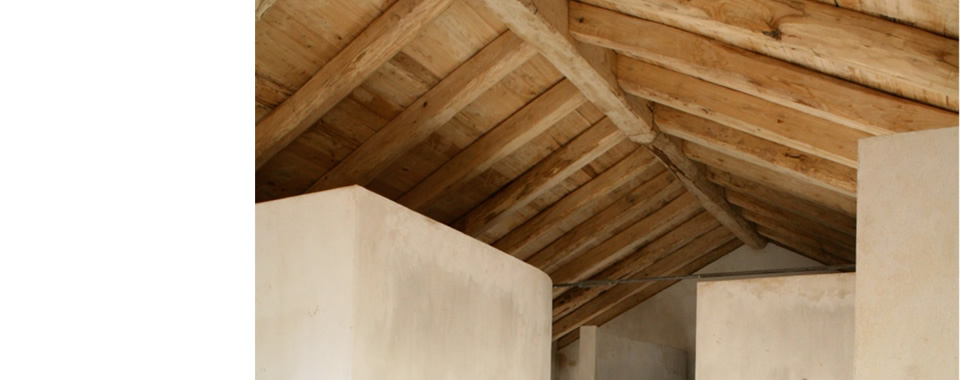

Score - Sustainable Construction in Rural and Fragile Areas for Energy efficiency
Guidelines for Integrated territorial Planning:
Natural lighting
NATURAL LIGHTING
The following guidelines come from a deep analysis of case studies, norms and regulations, in relation to the both regional and local level. This analysis is summarized in a card that can be downloaded in Spanish language.
The current percentage of electricity consumption for the lighting of residential buildings is between 10 and 20% in relation to the total energetic expense. The possibilities of decreasing these levels are based in the implementation of a varied sort of strategies, such as the use of energy saving lamps, automatic turn-on/turn off devices (moving detectors), zoning of lighting fittings in different spaces depending on the lighting needs, and, of course, natural lighting use.
The correct exploitation of this free resource has evident benefits on electricity installation efficiency, affecting to the production needs, and consequently minimizing the impacts on the environment (lower CO2emissions). In addition, the reduction of artificial lighting would suppose a contraction of the amount of debris produced by this technology, related both to the manufacture and the useful life of the equipment (fluorescent tubes, light bulbs, lighting fittings). There are also some research studies advising about the risk of certain light bulbs, which include mercury components. It is proved that these compounds are very contaminant, both for human health and for environment.
Another remarkable feature is related to the perception of naturally lit spaces. If it`s well balanced, the visionary quality of these spaces seems to be more aesthetically appealing to users. Therefore, this proves that there is a direct link between the architectonic manipulation of natural light in buildings and the comfort they can offer. Consecuently, this connection can be extended to health field, as there is a definitive psicological influence of the quality of spaces in people. This is especially valuable in projects where lighting has a main role such as schools, offices, libraries, factories, etc.
There is a cultural aspect in taking advantage of natural light as well, as this is an endemic characteristic of traditional mediterranean housing. Some of the main elements of popular construction in andalusian area were designed on the purpose of disposing filters to the climatic agents (light, heat, wind), which are sometimes quite hard.
The main weakness in natural lighting spread comes from the fact that this technology is not explicitly described in laws as a sustainable practice, and there are only a few references in local regulations guided from the point of view of healthiness. This means that the manipulation of this resource is under the discretional criteria of the architectonic design.
Most of the times, technicians have to deal with several inputs which are difficult to control in an exact way (site, sun facing, layout of the spaces, economical aspects, ect). They also need to handle the balance between natural lighting and energetic loss through windows and skylights. Tools as modelling, simulations and specific lightning calculation programs would help to manage these different concepts in a project, but they are not ussually demanded by administrations, as the mediterranean area doesn`t use to have lack of natural light.
The diffusion of sustainable works with natural lighting could be facilitated following some advices such as:
- Includind references in the existing laws about the use of natural light as a sustainable practice, and demanding minimun rates of it, at least in public projects where light has a main role;
- Promoting the use of different tools (modelling, simulations and specific lightning calculation programs) to get more accuracy in the control of this resource.
- Fostering educative and reseach actions to ease a higher knowledge about natural lighting in buildings, especially in renovation and historic areas where this field can have a greater development.
Indication for the Bio-construction Action Plan
Pursuant to the guidelines written above, here are synthetically reported the criteria/examples for pilot projects to be financed in MED territory, in relation with the specific treated theme.
These criteria/examples, together with the ones resulting from all the themes of eco-construction tool matrix, will make up a Bio-construction Action Plan for each partner countries.
- Projects for education and research programs about natural lighting specially focused on existing buildings, renovation projects and historical areas.
- Projects for normative/regulations structure adjustment or enacting new specific laws, especially for regional level, aimed to include the use of this resource as well as the different strategies for taking advantage of it, as a sustainable practice
Possible criteria for MED bio–housing quality certificate
The internationally recognized green building certifications, normally give few indications about the use of natural lighting. The same happens for the most common Spanish certification system. Nowadays the only current regulation about this theme is the Order 2008/07/21 about Technical Design and Quality Requirements in Protected Housing in Andalucia, and the local regulation (Municipal Urbanistic Plan). These rules are guided from the point of view of the healthiness and simply specify the requirements for windows and courtyard dimensions (point 6 and 7, Order2008/07/21, see anexes 1 an 2 of the card). It isn’t considered necessary that green building certifications as should be made more complicated. However we think it would be recommended the including of minimun natural lighting rates, at least in public projects where light has a main role.
Case studies
- Abengoa Company Headquarters (Sevilla).
